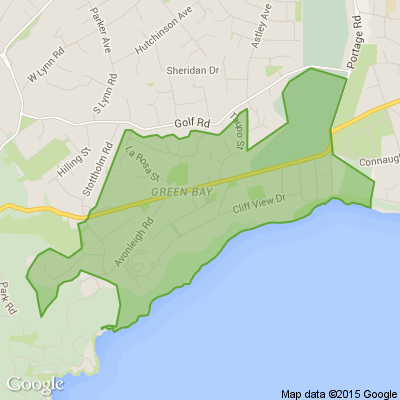The $10 million tunnel: Speed ticket bonanza for Waterview Tunnel
Almost $10 million worth of speed camera tickets have been issued to some of the more than 44.5 million motorists who have travelled through our longest road tunnel since it opened to much fanfare and excitement two years ago next week. But latest police figures also showed the number of tickets being issued from static speed cameras in Auckland's Waterview Tunnel dropped significantly in the last two months for which figures are available, raising hopes motorists are getting the message about safe speeds in the 2.4 kilometre long twin tunnels. NZTA has revealed between the July 2017 opening and April this year 44.56m vehicles had travelled through the tunnel, which is around half a million a week or on average 60,000 to 70,000 a day.Police have "no interest in the dollar value" when it came to infringement notices, it's about keeping people safe, Inspector Scott Webb says. But an early rush of speeding tickets had eased, which wasn't surprising, Tamaki Makaurau road policing manager Inspector Scott Webb said."What we have typically found is that safe speed camera offences are usually high when they are first installed before eventually decreasing over time as people become accustomed to the cameras being in position and moderate their driving behaviour accordingly."The numbers would indicate that this is indeed the case in this situation and it is pleasing to see motorists adjusting their driving behaviour."The figures showed 4568 tickets were issued in March, up slightly from 4344 the month before but dramatically down from January, when 8680 motorists were ticketed, and December, when 11,403 were caught going too fast.Those going too fast were captured by cameras installed in the tunnels, after a switch in August last year from cameras at the northern entrance and exit enforcing the 80km/h speed limit. The number of tickets from the entrance and exit cameras were generally between about 4000 and 6000 a month, with two months over 7000 and one — November last year — at just 277, before totalling 4201 the month before the cameras were switched off.The total number of tickets issued across all cameras since the $1.4 billion tunnel project opened, and until the end of March, was 108,281, with a total value of $9.7m. And despite the sting in the tunnel's tail for some heavy-footed drivers, they had some way to go to match the cost of the tunnel — if the tunnel's $1.4b cost were to be paid off by speed camera tickets it would take around 300 years. Police had "no interest in the dollar value" when it came to infringement notices, but were committed to keeping people safe, Webb said. "As the public know, speed is one of the biggest factors in crashes which result in serious harm or death on our roads. The speed limit is there for a reason - with motorists needing to take extra caution in confined, walled spaces such as tunnels."Our message remains the same, stick to the speed limit, wear your restraints at all times and avoid any distractions, such as cellphones, while driving." The twin tunnels were built to better link Auckland's sprawling isthmus and ease pressure on State Highway 1.There was good reason for the 80km/h speed limit in the tunnels and on the motorway approaches, NZ Transport Agency's Auckland System Manager Andrea Williamson said."The tunnels are an enclosed space and the consequences of a high-speed crash inside one of the tunnels are potentially catastrophic."We encourage everyone to drive safely, stay in their lane and keep to the speed limit."The twin tunnels — at the heart of a first anniversary Herald feature on the people working in the tunnel, and those making a life above it — are a key part of the Western Ring Route, aimed at providing an alternative to Auckland's under pressure State Highway 1 and better linking the city's sprawling isthmus.Figures also showed October last year was the busiest month since opening, with 2,383,931 vehicles using the tunnel.The busiest single day occurred the following month, on November 15, with 91,867, one of only four days totalling more than 90,000 vehicles. More than 44 million vehicles have passed through the Waterview Tunnel since it opened in July 2017. The quietest day was Anzac Day this year, when just 39,538 vehicles went through the tunnel. Only one other day had seen fewer than 40,000 vehicles - December 31 last year (39,780).
Safety features in the tunnel include fire sprinkler systems and 24 hour CCTV and incident response crews.
The crew, who are not limited to the tunnels, have attended 4396 incidents, including 1179 breakdowns, 635 out of fuel and 497 flat tyres since the tunnel opened, according to the agency.There have been 11 vehicle fires, but only one minor incident in the tunnel.They have also attended 193 crashes, but only 10 were in the tunnels and only three required emergency services.NZTA figures also showed it was not just the road tunnels proving popular - with the Waterview project's 3.4km of safe accessible shared path, connecting with the northwestern cycleway on SH16 to the city, used by 73,606 riders last year. In the first five months of 2019 there have been 40,214 trips recorded, a 16.4 per cent increase on the same period last year.
===========================================================
Poll: Do you think NZ should ban social media for youth?
The Australian Prime Minister has expressed plans to ban social media use for children.
This would make it illegal for under 16-year-olds to have accounts on platforms including TikTok, Instagram, Facebook and X.
Social media platforms would be tasked with ensuring children have no access (under-age children and their parents wouldn’t be penalised for breaching the age limit)
.
Do you think NZ should follow suit? Vote in our poll and share your thoughts below.

-
85.6% Yes
-
13.3% No
-
1.1% Other - I'll share below
What's your favourite recipe for courgettes?
Kia ora neighbours. If you've got a family recipe for courgettes, we'd love to see it and maybe publish it in our magazine. Send your recipe to mailbox@nzgardener.co.nz, and if we use it in the mag, you will receive a free copy of our January 2025 issue.

Need Event Medical Cover?
MRI provides modern medical solutions for a wide range of events and industries. From local sporting or community events - to large concerts and major festivals - we can provide tailored and professional medical cover that suits your needs.
Our experienced team of clinicians and operations managers can provide a complete risk assessment of your event and advise you on the most suitable medical expertise to have on site.
Get in touch with the team today at info@mri.nz








 Loading…
Loading…













